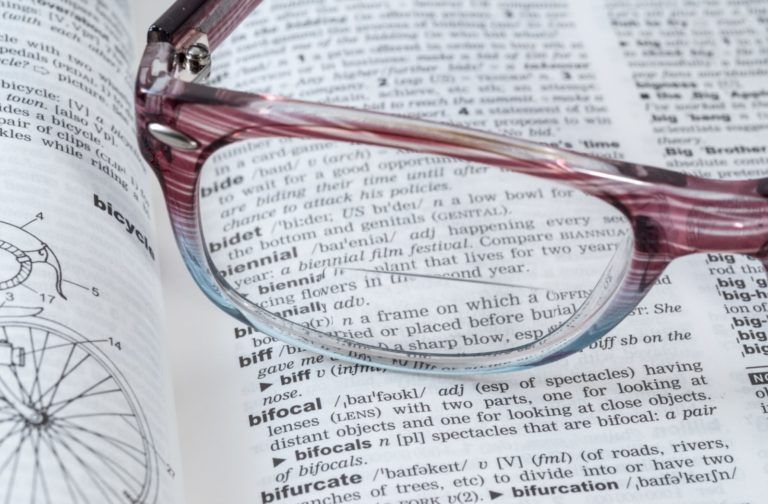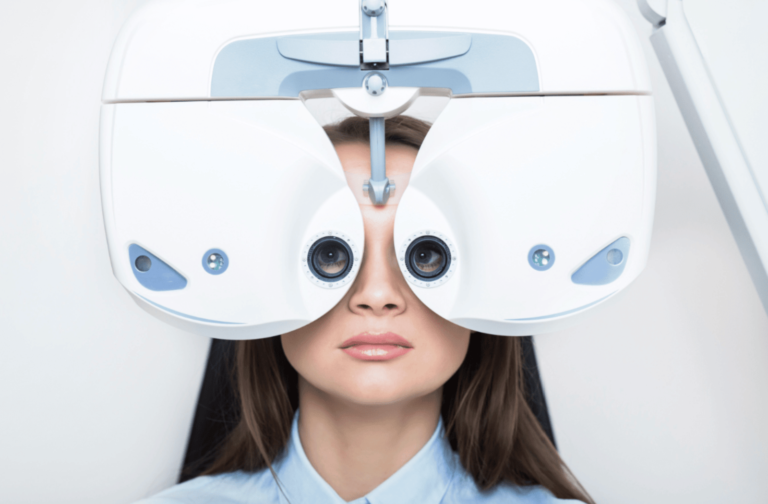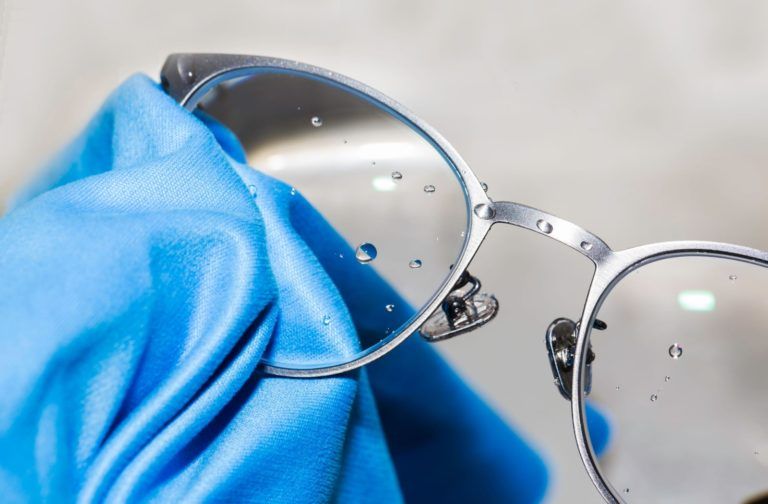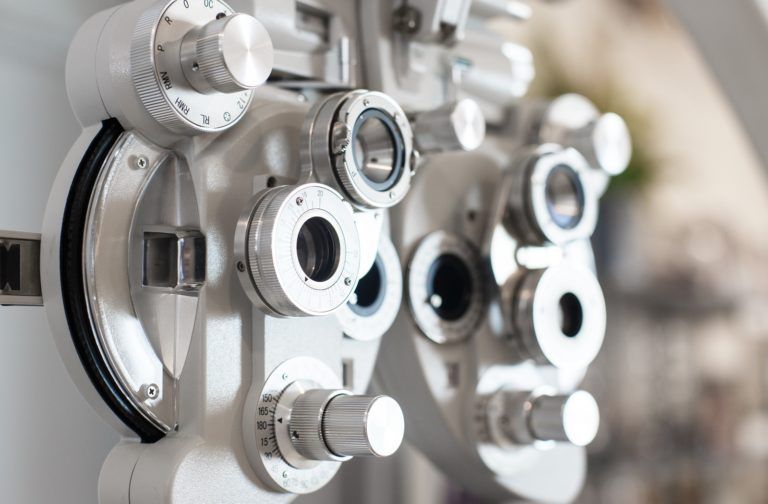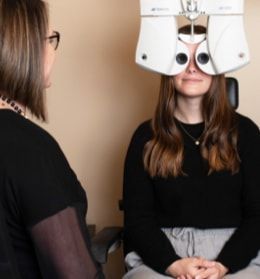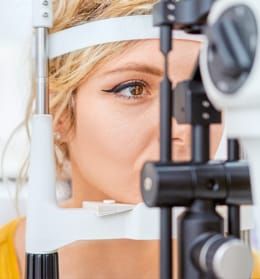As you get older, your eyes will age the same way the rest of your body does. They’ve put in a lot of effort over the years, and now they might need some help seeing things clearly at different distances.
There are numerous types of eyeglasses. A single-vision lens with a single power or strength across the entire lens, or a bifocal or trifocal lens with multiple strengths across the entire lens.
However, while the latter two are options if you require different lens strengths to see far and near objects, many multifocal lenses are designed with a visible line separating the different prescription areas.
Today’s progressive lenses, thankfully, make it impossible for others to tell you’ve reached a “bifocal age”.
What are Bifocals & Trifocals?
Bifocals
Bifocal lenses have two different magnification levels separated by a visible transition line. Typically, the top lens is used for long-distance viewing, while the bottom lens is used for close-up viewing.
Trifocals
Visible transition lines in trifocal lenses separate three different magnification levels. The top is for looking at things at a distance, the middle is for looking at things at an intermediate distance, and the bottom is for looking at things close to you.
What are Progressive Lenses?
Progressive lenses, also known as “no-line bifocals,” eliminate the visible lines found in bifocal (and trifocal) lenses. These lenses are true multifocal lenses that provide a smooth, seamless progression of many lens powers for clear vision across the room, up close, and at all distances in between, rather than just two lens powers like bifocals, or three, like trifocals.
The goal is for the lens to more closely resemble the natural vision you had before the onset of presbyopia.
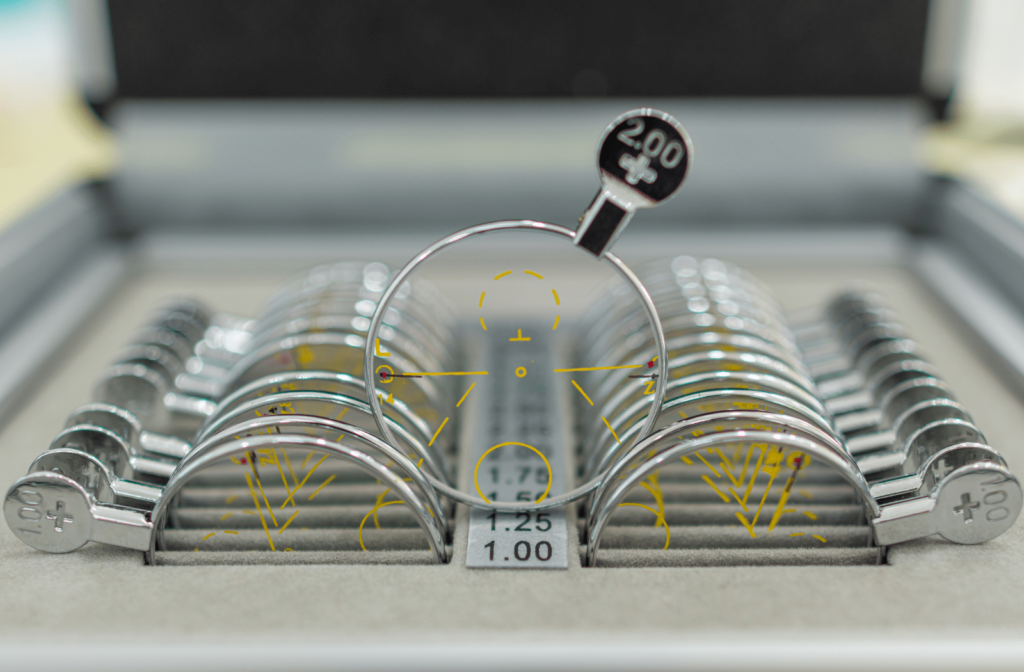
What is Presbyopia?
Presbyopia is the gradual loss of your eye’s ability to focus on nearby objects. It’s a normal part of getting older. Presbyopia typically appears in the early to mid-40s and worsens until age 65. Presbyopia is characterized by:
- Blurry reading
- Tired eyes
- Halos around lights
- Rubbing or squinting your eyes
- Headaches
Progressive lenses can help to reduce the effects of presbyopia while also combating refractive issues such as nearsightedness and farsightedness.
Blurry Close-Up Vision
If your blurry close-up vision prevents you from reading, performing close-up work, or engaging in other normal activities, see an eye doctor. He or she can diagnose presbyopia and counsel you on treatment options such as progressive lenses.
Headaches
Long periods of reading or computer work can cause headaches in people with presbyopia due to eye strain. Glasses can assist in reducing eye strain, which can lead to headaches.
Night Vision
Another symptom of presbyopia is the gradual deterioration of night vision. Even if all of the lights are turned on, it will be difficult to see clearly after dark.
Pros & Cons of Progressive Lenses
Pros
- Progressive lenses look more like regular eyeglasses than bifocal/trifocal lenses and are less thick and blocky.
- In contrast to bifocals and trifocals, seamless transitions don’t cause image jumping and lessen distortions.
- Progressive lenses offer a smooth image at all distances rather than only being clear at a set few, thanks to their gentle transition between magnification levels.
Cons
- If you’re used to wearing regular glasses, it takes a while to get used to them. You’ll need to practice looking through that portion of the lens when necessary and learn which parts of the glasses will focus on what distance.
- Moving your eyes from side to side while wearing progressive lenses can also result in peripheral distortion. This might make you feel nauseous.
- Progressive lenses are more expensive than standard and bifocal/trifocal lenses for eyeglasses.
Are Progressive Lenses Right for You?
Progressive lenses are one of the most popular multifocal options for a reason. Many people over the age of 40 prefer progressives to regular reading glasses because they allow you to have a reading prescription at the bottom and a neutral prescription at the top.
You’ll be able to wear your glasses all day without having to remove them to see far away. And, unlike bifocals, the reading correction on a progressive isn’t as visible, making it a good cosmetic choice.
Even though progressive lenses allow you to see clearly at both close and far distances, they aren’t for everyone. Some people never get used to using them. If this happens to you, you may experience dizziness, depth perception issues, and peripheral distortion.
The only way to find out if progressive lenses are right for you is to try them on and see how your eyes react. If you haven’t adjusted after two weeks, your optometrist may need to change the strength of your lens. If your problems persist, a bifocal lens may be a better option for you.
If you have any questions about progressive lenses, or would like to see frame options available at McCulley Optix Gallery, Book an appointment with us today!
Posted in Eyewear, Frames & Lenses
Recent Posts


Categories
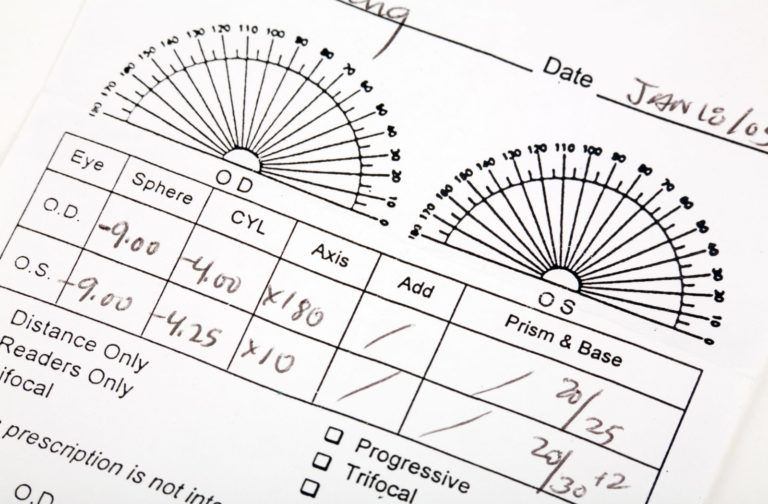


Written by Dr. Melissa McCulley
Dr. McCulley graduated with honor from Boston College in 1997 with a bachelor of science and a major in Spanish and pre-medical studies. She then went on to study optometry and graduated with honors from the Southern College of Optometry in 2001. She has past experience from the University of Minnesota Department of Ophthalmology fitting specialty contact lenses and working with low vision patients. Dr. McCulley is experienced in pediatrics and has a keen interest in treating dry eye.


